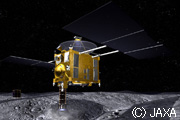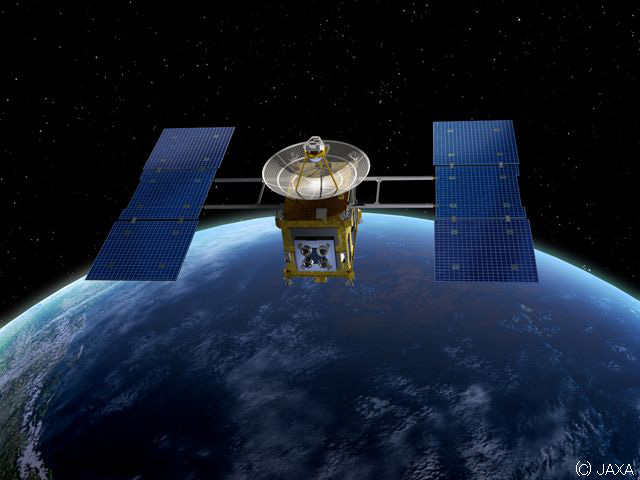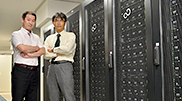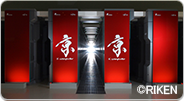Archived content
NOTE: this is an archived page and the content is likely to be out of date.
"Hayabusa" asteroid probe

Fujitsu participated in and contributed to the success of this world-first sample and return mission to asteroid "Itokawa" by developing and operating a number of key ground based systems.
1. Orbit determination system,
2. Real-time satellite status monitoring and fault diagnosis system,
3. Ground data transmission system for communicating with the satellite.
1. The "orbit determination system" determines where the probe is located, estimates its position and speed, and decides the overall flight plan for the probe, based on these results. Fujitsu reliably and continuously operated the orbit determination system over the seven years from launch of "Hayabusa" until its return. The system also provided precise orbit determination during the final challenge of reentry into Earth's atmosphere, and also greatly contributed to precise guidance to the desert recovery area in Woomera, Australia.
2. The "real-time satellite status monitoring and fault diagnosis system" provides real-time functionality to transmit the status of each device built into a satellite and automatically perform fault diagnosis with operator notification. In the "Hayabusa" mission, this covered critical status-monitoring roles for satellite operation such as reliably transmission, to the ground based operations team, of the status and faults detected in the various on-board devices as well as monitoring power margins while moving using the ion engines.
3. The "ground data transmission system" links the ground stations and provides communications between the probe and the Spacecraft Operation Center in the Institute of Space and Astronautical Science in Sagamihara, Kanagawa prefecture. This not only assistsed with the operation of "Hayabusa", but also aided satellite operations at the Institute of Space and Astronautical Science.
Fujitsu has become a contributor to space development projects through the construction of highly reliable, high performance ground-based systems that underpin the success of leading-edge space science missions.
 "Hayabusa" asteroid probe
"Hayabusa" asteroid probeRelated Link
Footnotes
1: "Hayabusa" asteroid probe
"Hayabusa" is an asteroid probe that was launched by the Institute of Space and Astronautical Science (the Japan Aerospace Exploration Agency was inaugurated in October 2003 when the National Aerospace Laboratory of Japan merged with the National Space Development Agency of Japan) on 9th May 2003.
2: Uchinoura Space Center
The Uchinoura Space Center was established in Uchinoura (since renamed Kimotsuki) in Kagoshima prefecture in 1962 as an annex of the Institute of Industrial Science, University of Tokyo. In 1964, the space center became part of the Institute of Space and Aeronautical Science, University of Tokyo, and in 1981 it became an independent research facility, the Kagoshima Space Center (KSC), attached to the Institute of Space and Astronautical Science (ISAS). Its name was changed to the Uchinoura Space Center (USC) when the Japan Aerospace Exploration Agency (JAXA) was formed. The Uchinoura Space Center performs work such as launching, tracking, and scientific measurement of rockets and scientific satellites, plus the collection of data.


